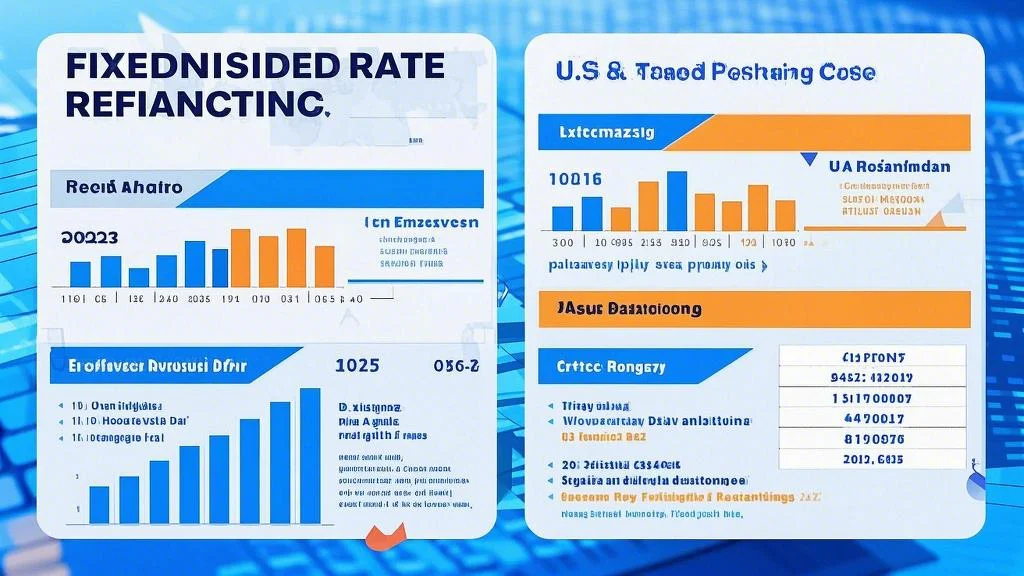Understanding the Tax Implications of Refinancing
Refinancing a mortgage is a common strategy for homeowners looking to reduce their monthly payments, lower their interest rates, or tap into home equity. However, refinancing also comes with tax implications that borrowers should carefully consider. In 2025, the tax landscape for refinancing is expected to remain largely consistent with recent years, but there are key points every homeowner should keep in mind.

What is Refinancing?
Refinancing involves replacing an existing mortgage with a new one, often at a more favorable interest rate or terms. Homeowners can choose between different types of refinancing, such as fixed-rate refinancing, adjustable-rate refinancing, or cash-out refinancing. Each option has its own benefits and drawbacks, particularly when it comes to tax implications.
Tax Benefits of Refinancing
One of the primary tax benefits of refinancing is the potential to deduct interest paid on the mortgage. Under IRS guidelines, homeowners can deduct the interest paid on their mortgage from their taxable income. This deduction can significantly reduce a borrower’s tax liability, particularly for those in higher tax brackets.
However, there are limits to this deduction. The IRS allows homeowners to deduct interest on up to $750,000 of mortgage debt, provided the debt was incurred before December 15, 2017. For debts incurred on or after December 15, 2017, the limit is $500,000. Additionally, the home must be the borrower’s primary residence to qualify for the deduction.
When Does Refinancing Affect Tax Benefits?
While refinancing itself doesn’t directly trigger a tax liability, certain aspects of the process can impact your taxes. For example, if you refinance and increase the total amount of your mortgage, the interest deduction is still available as long as the total mortgage debt does not exceed the IRS limits mentioned above.
However, if you take out cash during refinancing (a cash-out refinancing), the IRS may treat the cash received as taxable income. This is because the cash-out refinancing essentially counts as paying off a portion of the mortgage and then immediately borrowing against it again. The IRS requires that homeowners report the amount of cash received as income on their tax returns.
What Costs Are Tax-Deductible?
Beyond the interest itself, borrowers may also be able to deduct certain costs associated with refinancing. These costs, often referred to as “points,” can include origination fees, appraisal fees, and title insurance. The deductibility of these costs depends on the type of refinancing:
Points for Primary Residence: If you pay points to obtain a refinanced mortgage for your primary residence, you can deduct them entirely in the year you pay them.
Points for Non-Primary Residence: If the refinanced mortgage is for a second home or investment property, the points are treated as costs that must be amortized over the life of the loan.
It’s important to consult with a tax professional to ensure that you’re adhering to IRS rules regarding the deductibility of refinancing costs.
Strategic Considerations for 2025
In 2025, the tax implications of refinancing will likely remain unchanged, but borrowers should stay informed about any potential tax law updates. For example, the IRS could revisit the limits on mortgage interest deductions or introduce new rules regarding cash-out refinancing.
Furthermore, borrowers should assess their financial situation carefully before refinancing. While the tax benefits can be substantial, they should also weigh the long-term savings against the upfront costs of refinancing. A refinanced mortgage with lower monthly payments might reduce your tax bill, but it’s essential to ensure that the overall terms of the new loan align with your financial goals.
Key Factors to Consider Before Refinancing in 2025
Before refinancing, homeowners should consider several factors to ensure that the move is both financially beneficial and tax-efficient. Below are some of the most important considerations for 2025.
1. Current Interest Rates vs. Potential Tax Changes
The decision to refinance hinges on comparing current interest rates with potential changes in tax laws. For example, if interest rates are expected to drop significantly in the coming years, refinancing now might save you money in the long run. Conversely, if tax laws are expected to restrict the mortgage interest deduction, refinancing might become more costly.
2. Home Equity and Debt Limits
As mentioned earlier, the IRS imposes limits on the amount of mortgage debt that qualifies for the interest deduction. Borrowers who exceed these limits may not be able to fully deduct their interest, reducing the tax benefits of refinancing. Always check the IRS guidelines and consult with a tax professional to ensure compliance.
3. Break-Even Analysis
Before refinancing, conduct a break-even analysis to determine how long it will take for the savings from the lower interest rate to offset the costs of refinancing. This analysis can help you decide whether refinancing is worth the upfront expenses.
4. Alternative Options
Refinancing isn’t always the best option for every homeowner. In some cases, borrowers may find better savings by making extra payments on their current mortgage or by taking advantage of other tax-advantaged investment opportunities.
5. Long-Term Financial Goals